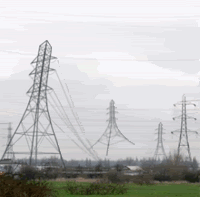SegDog
Member
- Location
- Philadelphia
Different strokes
Different strokes
Hi Guys (Girls,too),
First, I did not read all of these posts, but promise to. I do not drink but after reading a few, I am re-considering. Many years I worked before re-turning to school. I appreciate different ways of visualizing what we, already, think is what's going-on.
In a single conductor (wire) there are many complex things going-on. Not just charges flying-down and rounding the turn, and returning (like a Nascar race). There is no doubt a complex system of collisions (electrons?), and subsequent waves within a single wire. Visualizing these is difficult; proving this another matter.
When considering a lighting bolt, I tried to imagine all the particles going back-and-forth, back-and-forth, countless times setting-up the not-visible circuit before the discharge occurs (at lightning speed). Some lucky people have stated that seconds before the lightning bolt, they felt their hair stand-up. So, in my simple way, I'm working-on the idea that some circulation is set-up within a single wire; conductor; lightning bolt; arc.
It's extremely difficult to change the way we view things, or take something easy and make it difficult (any lawyers here), but stepping-back and taking another look is a healthy approach. The "bird-on-the-wire" or helicopter servicing the HV lines fascinates me. I'm just glad that I learn new things everyday.
Thank you,
Different strokes
Hi Guys (Girls,too),
First, I did not read all of these posts, but promise to. I do not drink but after reading a few, I am re-considering. Many years I worked before re-turning to school. I appreciate different ways of visualizing what we, already, think is what's going-on.
In a single conductor (wire) there are many complex things going-on. Not just charges flying-down and rounding the turn, and returning (like a Nascar race). There is no doubt a complex system of collisions (electrons?), and subsequent waves within a single wire. Visualizing these is difficult; proving this another matter.
When considering a lighting bolt, I tried to imagine all the particles going back-and-forth, back-and-forth, countless times setting-up the not-visible circuit before the discharge occurs (at lightning speed). Some lucky people have stated that seconds before the lightning bolt, they felt their hair stand-up. So, in my simple way, I'm working-on the idea that some circulation is set-up within a single wire; conductor; lightning bolt; arc.
It's extremely difficult to change the way we view things, or take something easy and make it difficult (any lawyers here), but stepping-back and taking another look is a healthy approach. The "bird-on-the-wire" or helicopter servicing the HV lines fascinates me. I'm just glad that I learn new things everyday.
Thank you,


